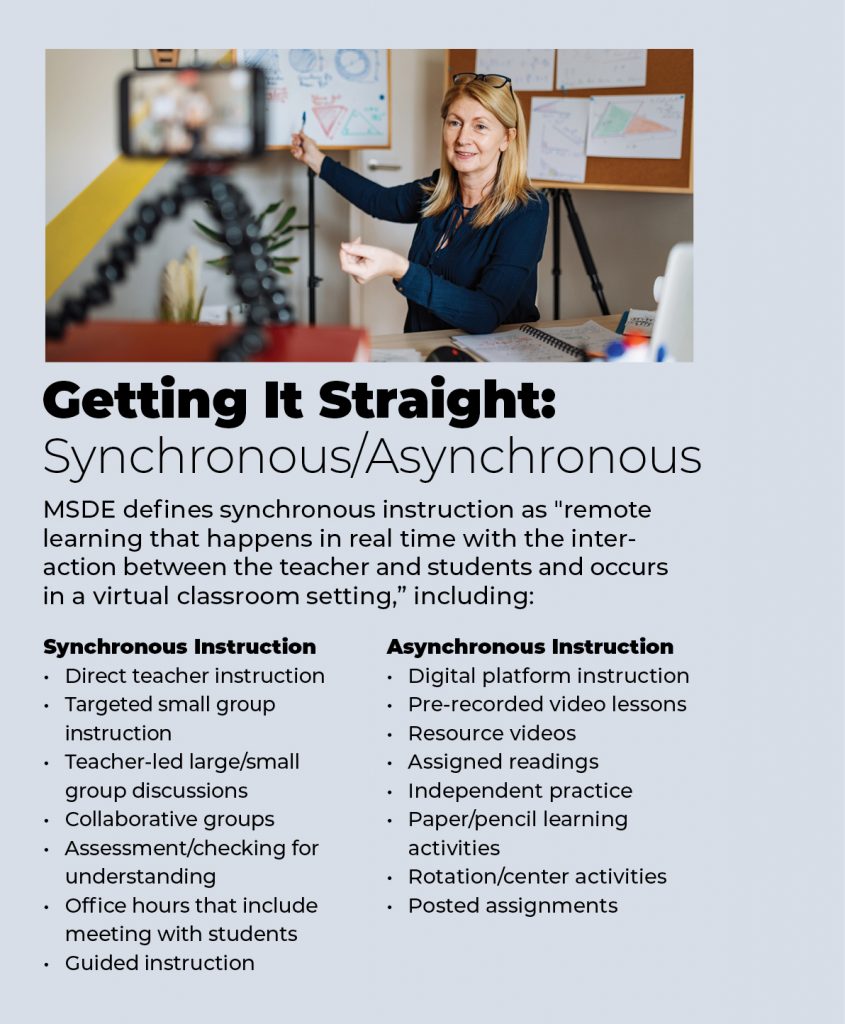MSEA Steps in as MSDE and Governor Undermine Plans
It’s been a long, difficult haul—made more challenging recently as state leadership has attempted to undermine the planning and hard work of educators and local districts. On August 27, as schools, educators, and families were preparing for back to school under the most stressful of conditions, Governor Hogan and Superintendent Karen Salmon held a joint press conference and without notice created chaos and confusion across the state.

All summer long, the state had refused to set specific metrics for the new school year and had left it up to districts and educators to work hard to determine the best and safest approach for their communities. At the press conference, Salmon and Hogan unveiled new metrics intended to guide reopening decisions just days before schools opened for students while chiding locals for starting virtually—a confounding scenario that was universally derided as poor crisis management from top state officials, educators, and parents.
“The governor and superintendent abdicated responsibility for creating reopening standards and told districts to come up with their own plans, indicating appropriate confidence that local school systems would do what is best for students,” said President Cheryl Bost. “Today, they chose to ambush and second guess the hard decisions that local boards of education, parents, and educators have made to keep students and schools safe.”
We don’t think local school systems lack the will for in-person instruction, in many cases, they simply lack the way to do it safely.
— The Baltimore Sun
Superintendent’s Plan Throws Planning to the Wind
The confusion, mixed messages, and 11th hour dictates didn’t stop there. On Saturday, August 29, the State Board quietly posted on their website new proposed mandates that would force all schools to revise their teaching schedules by September 28 to include 3.5 hours of synchronous learning each day in every grade. This sneaky move—again with no heads up to local districts or educators—would undermine the local schedules that educators and parents had spent months planning around. The State Board planned to vote on the proposal just a few days later, on September 1.
MSEA’s Call to Action
On Sunday, August 30, MSEA launched a call to action to members by launching a petition pushing back against Salmon’s proposal. The petition collected a staggering 22,000 signatures in 48 hours. And at the State Board meeting on Tuesday, September 1, Salmon’s proposal failed. In the end, MSDE approved setting a 3.5-hour average of synchronous learning per day across grades by December, not September.
“We appreciate that the State Board of Education rejected Superintendent Salmon’s last-minute proposal to rip up local school schedules in a matter of weeks without thought for the confusion, stress, and chaos that would ensue,” Bost said. Effective—and immediate—member activism had won the day and fended off ill-considered and ill-timed proposals from the state.


